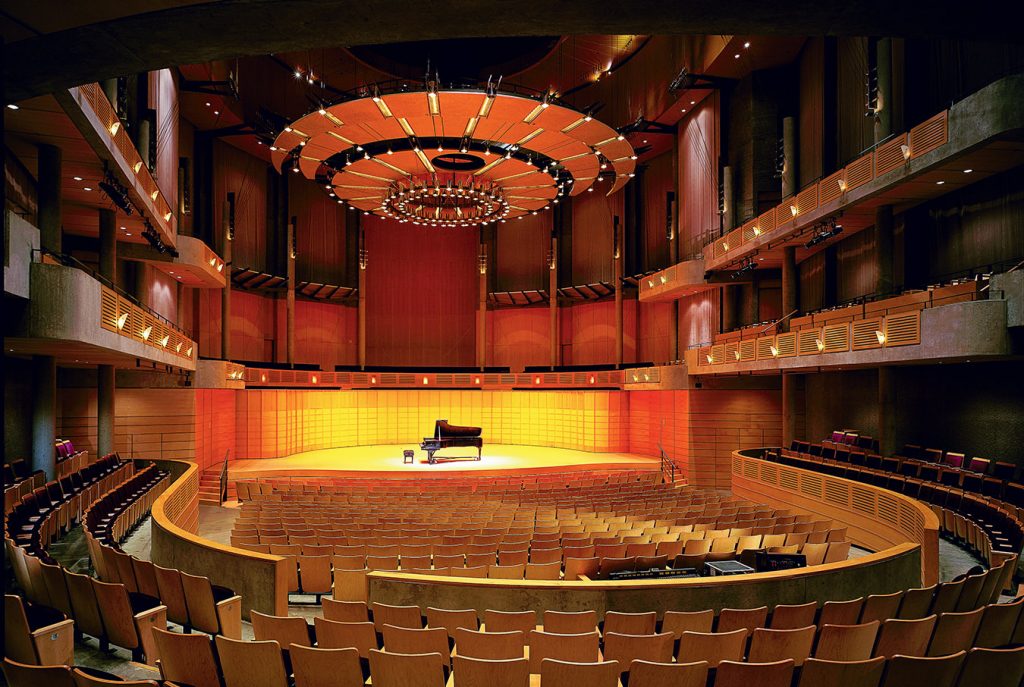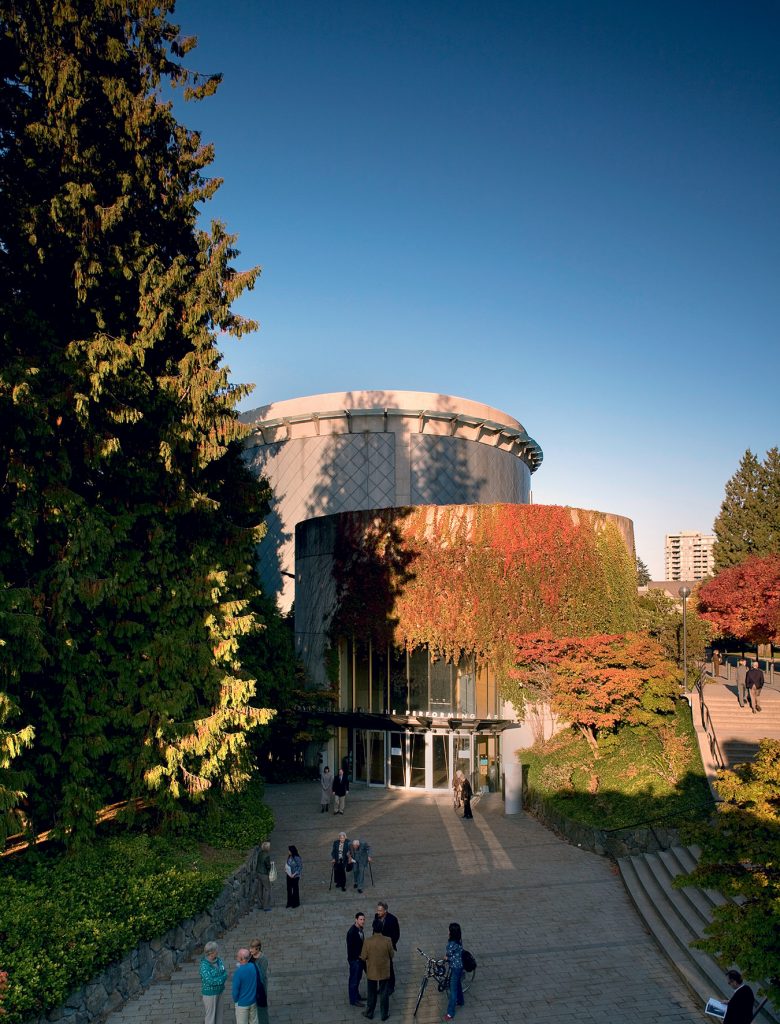It began as a part of a trade mission to Hong Kong with David Strangway, the then president of the University of British Columbia, and Gordon Campbell, the then premier of B.C. They met with the Chan family, particularly Chan Shun, father of Tom and Caleb Chan. The family had been part of Vancouver’s community only for a year or so, but they were already dedicated believers in the culture of tolerance and diversity that the city manifested. Before long, they would be moving their business operations to Vancouver. It proceeded along its path to inception with a financial gift to the university, at the time the largest gift of its kind in Canadian history. Along the way were detours, tribulations, pitfalls, and plenty of negotiating among the university, the architects, and the acoustical engineering legend, all of whom made the Chan Centre for the Performing Arts a reality in May 1997.
The architects were Bing Thom and his team at Bing Thom Architects. The university, led by Dr. Strangway, was most prominent, pragmatically and efficiently led in this specific project by Don Paterson, professor of economics and former associate dean of the Faculty of Arts. The construction company, EllisDon, provided the highest in standards and expertise. The acoustic company, Artec Consultants, was headed by the late and legendary Russell Johnson. The Chan family had plenty of options offered to them, but they immediately gravitated to a performing arts centre on the university’s property both to push forward education and to celebrate culture. The final result is an acoustic marvel and unique beauty, nestled among a forest planted by the university’s early forestry professors.
Exterior and interior meld beautifully, and all visitors are the beneficiary of the time and attention to aesthetic detail that Bing Thom and his team brought to this place. The majestic lobby walls, 18-foot-high canted glass, allow people to feel as if they are still walking along the forest paths that grace the proximate areas. And inside the theatre itself a wonder of another kind takes hold.
The auditorium, shaped like a cello and based somewhat on earlier acoustically successful box-shaped spaces, allows for completely even distribution of sound. Even if you were to walk unattended through the place while it is completely empty, you would notice a sweetness to the sound of your own footfalls. And if, for example, two theatre technicians entered and had a discreet conversation at the farthest end of the hall, you’d be able to easily hear the sounds of their voices. The seats, the seat cushions, everything about the place is dedicated to making sound travel as purely and efficiently as possible.
Every contingency is covered. … The concrete walls of the theatre are convex with a stippled surface. Sound reverb is absolutely minimized. Even the silence is golden in this place.
A 37-ton acoustic canopy hangs over the main stage. It is made of steel, wood, and cork, and it can be adjusted for height to accommodate different acoustic needs. Its purpose is to either dampen or augment the sounds coming from the stage, changing the acoustics of the room depending on what kind of music or performance is taking place, how many artists are involved, and what kind of instruments are being played. Every contingency is covered. The motorized fabric banners that adorn the walls are sound absorbent. The concrete walls of the theatre are convex with a stippled surface. Sound reverb is absolutely minimized. Even the silence is golden in this place.
All of this acoustic marvellousness would be for naught if it weren’t for the performances that take place. For that, there is the amazing Joyce Hinton, co-managing director, to thank. Her task is to research, recruit, and book the talent that graces the Chan Centre main stage. She assumed this role in 2010, although she has been working in this capacity to some degree since 1995, and she has embarked on a remarkable and successful mission to bring both classical and world music to Vancouver. Recent talents that have graced the stage, and the resulting amazing concerts, include Punch Brothers, Pablo Ziegler with Regina Carter, and Kronos Quartet. Artists slated for the upcoming season include fado legend Mariza, the Jazz at Lincoln Center Orchestra with Wynton Marsalis, and South Korean ensemble SamulNori.
Hinton travels, listens to music in different parts of the world, and eventually constructs a schedule for each season. She says, in her modest and articulate way, “This is such a privilege, to find these artists and tell them about the Chan Centre and have them come here to perform.” She is quick to point out that “it is truly a communal effort here, in creating the best concert experience for our audiences.” Fair enough, but Hinton is leading the way in bringing great talent to the city of Vancouver, and the Chan Centre, with its international reputation, often helps her seal the deal.
What the Chan family originally thought of as a way to share their passion for their adopted home, and to somehow enhance the culture of the region, is perhaps now beyond even their expectations. The theatre encompasses graduation ceremonies, guest speakers, artists of magnitude and substance from around the globe. Most of all, it encompasses a world-class set of performances that a local audience can experience, each and every season.










